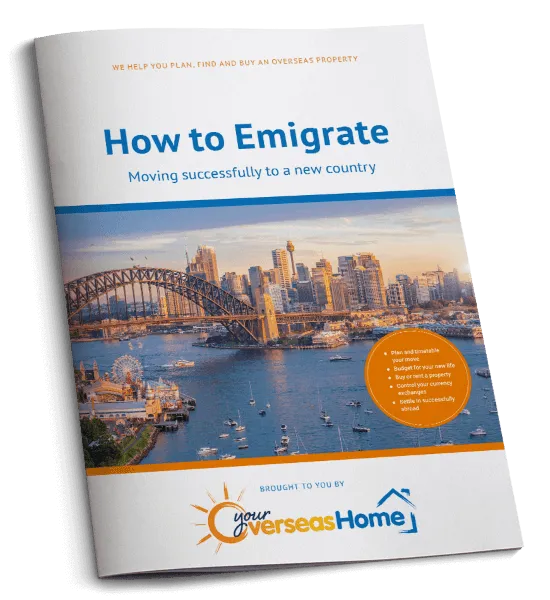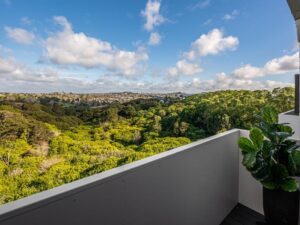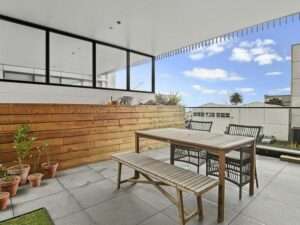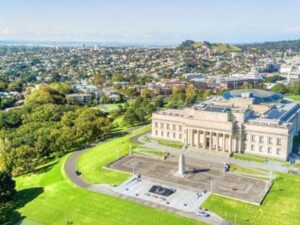While Australia and New Zealand are possibly the furthest you can get from the UK, they’re immensely popular countries or international buyers. Why, you ask?
Well, English is the first language in Oz and NZ, they both have beautiful rolling hills and verdant countryside, plus, modern cities that have fast become cultural hubs.
However, deciding between the two can be a hard decision to make. We investigate the key differences between life in Oceania’s two biggest countries.
Fun facts about New Zealand
- There are bout 9 sheep for every person in New Zealand
- New Zealand is approximately the same size as California, USA
- The Kiwi fruit, that names New Zealanders, is actually from China
- There are no snakes on land in NZ
- About 1/3 of the country is made up of National Parks
Fun facts about Australia
- 4/5 Aussies live less than 50km from the coast (according to the BBC)
- Australia has the world’s longest golf course (850m!)
- Australia is the world’s sixth largest country (after Russia, Canada, China, USA and Brazil)
- The Australian Alps get more snow than the French/Swiss Alps
- Tasmania has the world’s best air quality
Cost of living
According to Numbeo.com, New Zealand is typically the cheaper place to live. However, it’s all relative as property prices are higher in New Zealand and salaries are higher in Australia.
The Numbeo Cost of Living Index ranks countries by cost of living, in comparison to New York City. Both countries are considerably lower than Lady Liberty’s home, scoring 75.3 (Australia) and 72.9 (New Zealand). This means both countries are between 24% and 27% cheaper than NYC.
It’s true the cost-of-living evens out in rural areas of both Australia and New Zealand, but it’s in the cities are where the costs differ.
For example, monthly utilities for an 85m2 apartment in Canberra cost $359 and $250 in Wellington. The same index reports utility costs (for the same size apartment) in rural areas Port Douglas and Queenstown as $190 and $169.
Lifestyle
Australia ranks 3rd in Living Cost’s Best Countries to live and work. This index takes a lot of things into consideration. It compares salaries, air quality, life expectancy, GDP, homicide rates, cost of living and more. Australia came third worldwide, with a quality-of-life score of 97/100 and cost of living $2104 (for a single individual).
In the index survey, New Zealand came 17th out of 197 countries. Still not bad going. It scored 91/100 for quality of life and had an average cost of living of $1718 – considerably less than Australia.
These high scores are no surprise as both Australia and New Zealand are countries which celebrate the great outdoors. Their natural climate and picturesque scenery make for a wonderful place to call home.
Australia is about 29 times bigger than New Zealand and is home to over 25 million people. New Zealand, on the other hand, is home to 5 million. To put that into perspective, New Zealand is a little bigger than Great Britain (England, Wales and Scotland) but smaller than Japan.
Property prices
Property prices in Oceania are rather similar as both countries have areas with both regional and international appeal.
Sydney is the most populous city in the continent and home to the Opera House, Harbour Bridge and Massive Darling Harbour. Sydney is currently the most expensive place to buy property in Australia, but there is a market for investment and renting. According to CoreLogic’s Hedonic Home Value Index, the average home value in the capital city is $1,009,428 which is roughly £580,000.
Australia’s median home price is $708,613 (about £407,200). This is slightly lower than New Zealand’s median value of Nz$790,000 (£418,000) according to data from the Real Estate Institute of New Zealand.
The New Zealand property market is in high demand with Auckland being the most popular spot to buy. The latest REINZ report revealed that the median value in Auckland is $1,050,000 (roughly £555,555). Other key areas of note include Bay of Plenty, Wellington, Canterbury and Marlborough.
Job opportunities
Both Australia and New Zealand have a list of skilled prospective workers the country is in need of. There are significant gaps in some industries due to the effects of zero-tolerance Covid policies that didn’t allow migration for some time.
Last year Australia’s government announced plans to improve its migration programme, allowing for 195,000 people to apply for permanent migration. This number was previously at 160,000. The allowance for the number skilled worker visas also increased from 79,600 to 142,200.
Find out if your skills or job role are in demand in Australia.
New Zealand has a similar programme in place, but it differs slightly. There are three categories of skilled migrants, ranging from ‘straight to residence’ to ‘work to residence’ and ‘highly paid’. This makes it easier to attract skilled migrants for specific occupations. These job opportunities make getting a visa a lot easier as it’s the most straightforward application.
Find out if your occupation is needed in New Zealand.
Getting there (officially)
If you’re considering moving permanently, you can emigrate through skilled worker programmes if you are a in a desired industry.
Alternatively, you can be sponsored by and employer for a visa, however this depends on you finding a job before you move.
For more information on moving to Australia or New Zealand, download Property Guides’ free How to Emigrate guide for essential information on residency, visas, financing and much more!

Written by PropertyGuides for Rightmove
If you are considering a property purchase in Australia or New Zealand, whether for lifestyle or investment, opening a no-obligation account with FCA-authorised Smart Currency Exchange will enable you to benefit from their competitive exchange rates and specialist currency knowledge, ultimately saving you money and time. For more information, download Smart Currency Exchange’s free report or visit the Currency Zone.




